A guide to engagement ring cut, carat & setting

Whether you are getting ready to propose, or she’s already said yes, sealing your commitment with the perfect diamond for your engagement ring can feel overwhelming. After all, it is a major, once-in-a-lifetime event, and there are so many carats, cuts, and colours of diamonds to choose from. With so many different options available, you need to consider both your budget and your partner’s style and expectations. While every diamond search is a unique journey, having the right information will go a long way to help you find the perfect design.
Cut
A diamond is cut to enhance each stone’s unique characteristics. Cuts with fewer facets can only be applied to stones with higher clarity, as a diamonds cut influences its brilliance as well as the flashes of colour and sparkle it gives off, called fire and scintillation.
Cut grade determines the overall appearance of your diamond and ones that have been cut poorly will seem dull despite having excellent clarity or colour. Diamond cut grades are assigned by the GIA, so beware of any sellers who use their own cut grades, as they could be far more generous than the standardised GIA grade.
When buying a diamond for your soon-to-be fiancée, do you know what cut they prefer? If you’re unsure, safe choices would be either a princess cut or a round cut as they both have the most light-reflecting facets and cuts making them shine brilliantly. Round cuts, in particular, have a high brilliance and pair well with almost any ring setting.
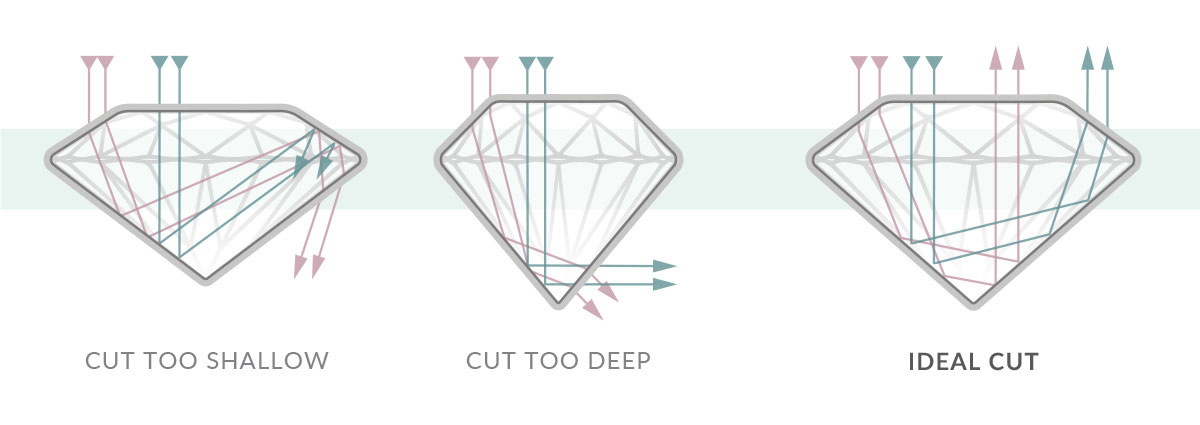
Carat
 Diamond size or weight is measured in carats, and the average diamond used in engagement rings is one carat, or 200 milligrams. Before you start looking for the perfect ring, you should set a carat size minimum based on your budget and your fiancée’s preferences. If she has her heart set on an engagement ring featuring a one carat stone, even the most gorgeous half carat diamond will most likely be a disappointment. That being said, choosing a 0.9 carat stone instead of a 1 carat, or 1.9 carat instead of 2, and so on could save you as much as 20%, and the difference is nearly imperceptible.
Diamond size or weight is measured in carats, and the average diamond used in engagement rings is one carat, or 200 milligrams. Before you start looking for the perfect ring, you should set a carat size minimum based on your budget and your fiancée’s preferences. If she has her heart set on an engagement ring featuring a one carat stone, even the most gorgeous half carat diamond will most likely be a disappointment. That being said, choosing a 0.9 carat stone instead of a 1 carat, or 1.9 carat instead of 2, and so on could save you as much as 20%, and the difference is nearly imperceptible.
Shape
Unless you know her shape preference, a round shape is very popular. A round diamond tends to have more brilliance than other shapes, they can be used in almost any ring setting, and they have always stayed in fashion. Otherwise, you might also want to consider other less common shapes such as marquise or pear.
Setting
Because diamonds are highly reflective, considering the colour of both the band and prongs that hold the diamond in place are both important to create a harmonious appearance. That’s why choosing the right metal for your diamond is often just as important as selecting the right diamond. The setting not only defines the style of your engagement ring, but also influences how your diamond appears, which can often take it to the next level.
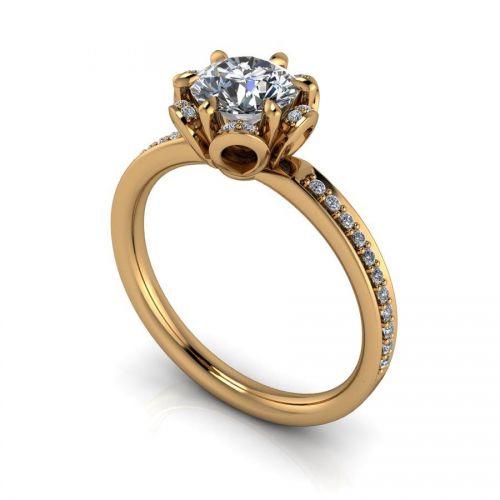 Gold, silver, and platinum are the most often used metals for jewellery, as their durability, workability, and allure make them excellent choices for an engagement ring.
Gold, silver, and platinum are the most often used metals for jewellery, as their durability, workability, and allure make them excellent choices for an engagement ring.  Yellow gold rings offer warmth, whereas white gold or platinum engagement rings add a more classic feel. White metal is typically used for the prongs to avoid imparting a yellow tinge to the diamond.
Yellow gold rings offer warmth, whereas white gold or platinum engagement rings add a more classic feel. White metal is typically used for the prongs to avoid imparting a yellow tinge to the diamond.
White metals are often used for coloured diamonds to highlight the hue, and the prongs can either complement or contrast the colour. For example, an orange-brown diamond can be contrasted with white prongs, or complemented with yellow gold prongs.
Choosing a diamond for your dreams & budget
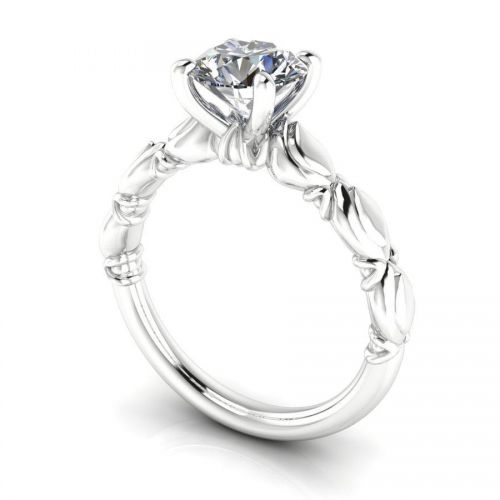 It is very important that you set a budget when searching for the perfect diamond engagement ring and stick to it. Everybody wants to give the love of our lives the highest quality diamond engagement ring, but sometimes we need to slightly adjust our expectations to be more in line with how much we can spend.
It is very important that you set a budget when searching for the perfect diamond engagement ring and stick to it. Everybody wants to give the love of our lives the highest quality diamond engagement ring, but sometimes we need to slightly adjust our expectations to be more in line with how much we can spend.
If size is important to your bride-to-be, you can make allowances with the clarity, as minor concessions are difficult to distinguish. Diamonds which are VS1 to VS2 will appear flawless to the naked eye, and much more affordable than truly flawless diamonds.
Colour is another area that you can make some compromises, as the difference of one colour grade is difficult to detect. When it comes to white diamonds, colour grade G to J diamonds can provide you with a great value stone without the higher price tag of a more colourless stone.
Remember that when you are making allowances on clarity and colour, it is important to consider diamond size, because it is much easier to see the imperfections of larger diamonds.

Coloured diamond engagement rings
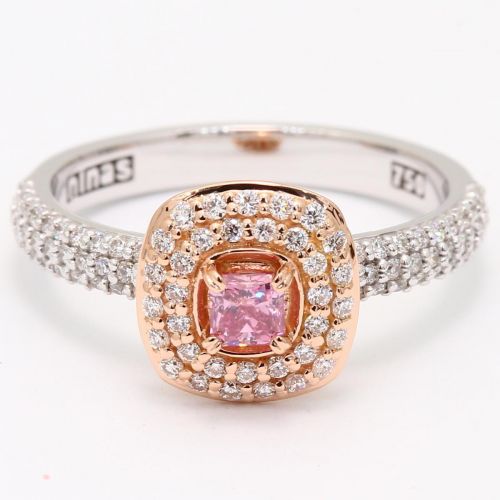 If you and your fiancée want an engagement ring that symbolises the uniqueness of your love, a coloured diamond might be the perfect choice. Coloured diamonds stand out from the crowd which is why they are popular choices for engagement rings.
If you and your fiancée want an engagement ring that symbolises the uniqueness of your love, a coloured diamond might be the perfect choice. Coloured diamonds stand out from the crowd which is why they are popular choices for engagement rings.
Coloured diamonds can have a higher price tag than white diamonds due to their rarity. However, you can still find a perfect coloured diamond to suit almost any budget simply by consulting with one of our GIA certified Diamond and Design specialists.
Nina’s are experts who can help you tailor a ring to suit your budget by considering all of these factors and how they interact with each other. Our GIA certified jewellery designers use only the best quality natural materials, crafted out of their Dunsborough workshop in WA by a team of master jewellers with over 70 years’ experience. Browse Nina’s collection of white and coloured diamond engagement rings to find inspiration - and maybe find that perfect ring.


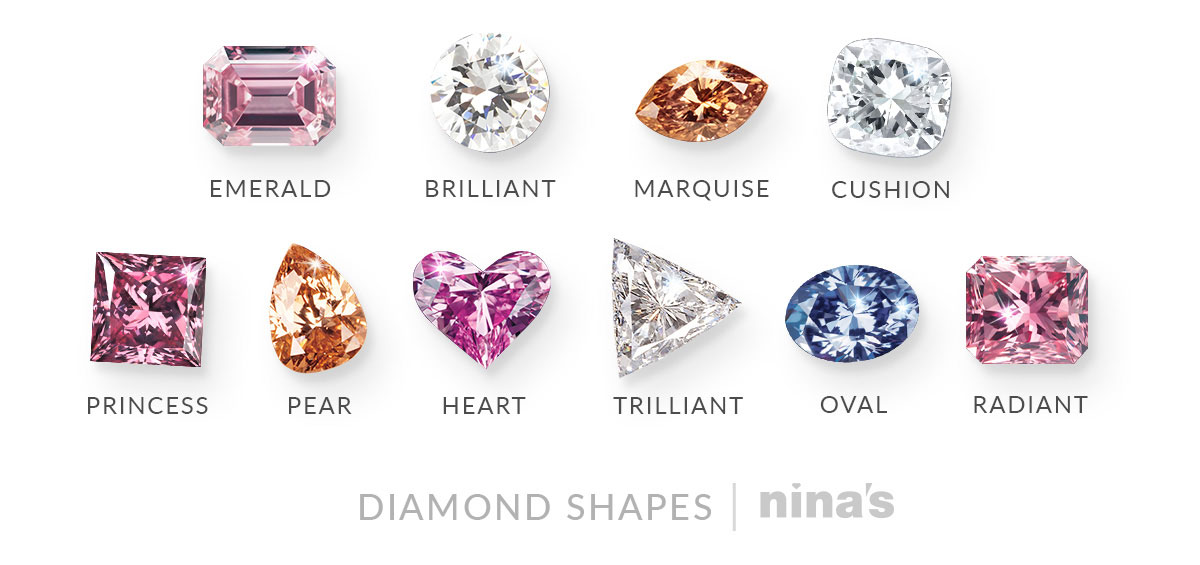



The information below is required for social login
Sign In
Create New Account